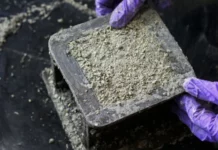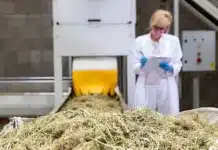John Lyons was set to retire from four decades of training horses and sell his seventy-acre training facility in Parachute, Colorado. Instead, he started one of the country’s first nutraceutical and medical hemp research and treatment facilities, the Colorado Hemp Institute.
“I was retiring, selling the place, taking the money and running,” Lyons says. “[But] God had a different plan for my life than that.”
Lyons claims to be one of the first ever “horse whisperers,” having trained more than 600 fellow horse trainers while holding expos and teaching his methods through books and other media. During his equestrian career, cannabis was just another drug to him and his wife, Jody, and it was never a part of their life.
But then a group of investment partners wanted to buy his land to grow cannabis on. The partners talked Lyons and his wife into attending a medical marijuana conference last year in Eugene, Oregon, and it ended up changing the couple’s entire perspective on the plant. “We were completely turned around over this medical conference,” Lyons remembers. “We started researching it, studying it, and finding out truly what a wonderful thing it is for people — and what a great medical thing it is, and truly how much research is being done about it all over the world.”
Although the four partners who approached Lyons ended up falling apart, he picked up the pieces with one of the partners and “started moving forward, full speed.” It quickly evolved into the Colorado Hemp Institute, an all-in-one center for doctors, growers and scientists to research hemp or cannabis as well as treat patients. Businesses will be onsite developing food products, and there’s space for housing visitors for short or long term stays, Lyons notes.
Non-psychoactive hemp and CBD will be the primary offerings, according to Lyons, but medical marijuana will be available, too. The facility will include a walk-in clinic, two or three doctors who can see patients in fifteen to twenty rooms and an assisted living center where visitors can receive cannabis treatment plans; there will also be an end-of-life facility to treat terminally ill patients.
Also onsite will be an organic restaurant, with the produce served being grown and harvested in a hydroponic grow right next door; Lyons envisions patrons will be able to see the gardens through a glass wall.
His staff is currently building a laboratory and observatory for people to observe and research hemp. A company out of Oregon will build a food processing plant on location this year that will manufacture health foods with hemp and CBD, he says, and there will be a commercial hydroponic grow up and running within the next ninety days.
The CHI team is currently nurturing plants in a 12,000-square-foot grow facility, which will soon be expanded to 20,000 square feet, with another 24,000-square-foot grow area added later this year. A small outdoor cultivation, several acres in size, will also be on campus. They already have 1,500 mother plants for the hemp operation, from which they will sell some 2,000 hemp clones; deliveries are slated to start May 1.
In Lyon’s short journey into cannabis, he’s already noticed the shortcomings of education around the plant, a leading factor in people’s perception of cannabis. He hopes his new venture will be an educational tool to those interested. “What they can do is actually walk from an extraction building to a research and development grow, to a regular grow, to hydroponic grows [and] to an indoor vegetable grow system,” explains Lyons. “So the idea is an all-around facility where companies and people can come that want to learn…We’re going to educate them and the surrounding community.”
The plan is only in its first ninety days of a five-year plan, but Lyons says they’ve already gotten “a tremendous amount done,” from forging partnerships with medical professionals, scientists and growers. Soon, he’ll be meeting with an owner and developer of assisted living communities to see if the institute is a good fit for one of their locations, he says.
At 70 years old, Lyons is on a mission. He knows he doesn’t have as much time to work as he used to, which is why he’s looking at a five-year completion: “[It’s] a very short plan when you think about it, because when you’re retired and you recognize you don’t have thirty years left to accomplish something, it puts it into a different priority scale.”














